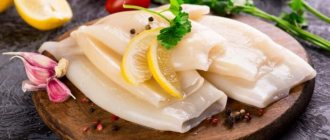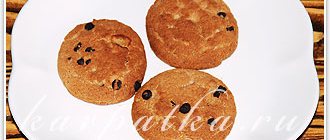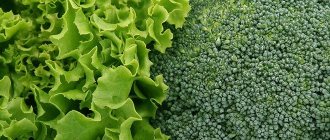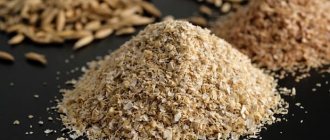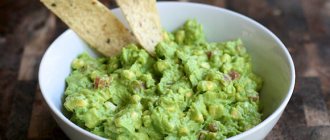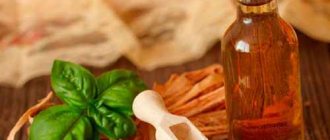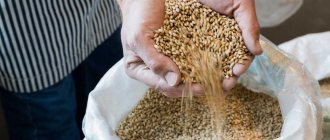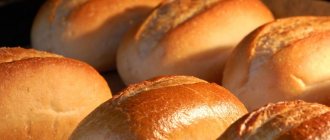Whole grain bread without yeast. Recipe for making bread in a bread machine
Whole grain yeast-free bread is a wonderful product and you can prepare it yourself without difficulty.
Store-bought baked goods cannot compare to your own. Cooking process Cooking at home without yeast bread will be especially appreciated by those losing weight and people on a diet. The product is low in calories and rich in nutrients. Homemade whole grain bread can be consumed by children from two years of age.
Includes:
- whole wheat flour - 1 cup
- wheat flour - 1 cup
- kefir or other lactic acid product 1 cup
- bran - 3 tbsp.
- oatmeal - ¾ cup
- honey 1 tbsp.
- vegetable oil - 2 tbsp. l.
- flaxseed - 3 tbsp.
- soda, salt 2 tsp.
- water 2 tbsp.
Grind the flax seed. Fry bran and flax seeds in a frying pan without adding oil. Mix all ingredients. Separately mix kefir, oil, honey.
Combine flour and liquid mixture, knead the dough. Pour the resulting dough into a container.
Set the “Baking” or “Cupcake” mode. The bread machine will do the rest of the work, about two hours of baking. After completion, carefully remove the resulting loaf and cool.
Adviсe:
To prevent the dough from sticking to the walls of the mold, you need to grease it with vegetable oil. An alternative to kefir can be sour milk or yogurt. The loaf turns out crumbly, and the aroma will not leave even a thinner person indifferent.
Corn bread without yeast
Yeast-free corn bread is not difficult to prepare. This is an excellent replacement for regular yeast, only healthier for the body. The fact that yeast is harmful to intestinal flora has been proven. Children who do not eat porridge can eat this product and will benefit from the corn composition. It can be consumed in its natural form, like sandwiches or crackers.
The multi-cooker recipe will not seem complicated. You need to prepare and mix the ingredients, the rest of the function will be performed by the equipment.
Ingredients:
- corn flour - 200 g
- wheat flour - 100 g
- kefir (you can use yogurt) - 250 ml
- vegetable oil 30 ml
- soda, salt - 2 tsp.
- flax seeds - 1 tbsp.
In a separate bowl you need to mix two types of flour, soda, and salt. For spice lovers, you can add turmeric.
Separately mix kefir and oil. Combine flour and liquid ingredients. Add a spoonful of flax seeds and mix thoroughly. Pour the mixture into a multicooker, after greasing the walls with vegetable oil. Set the “Baking” mode.
Carefully remove the finished product and cool. You need to eat it within two days. The main thing is that it’s not scary to give it to children, since the ingredients are all natural and healthy. The seeds can be replaced with sunflower seeds. Delicious and aromatic bread, prepared with your own hands, will be loved by all your loved ones.
The benefits of whole grain bread
To understand the benefits and harms of whole grain products, let’s look into history. Since the times of Tsarist Russia, gray and black bread was intended for the poor. With the development of the chemical and food industries, baking made from whole flour gained popularity. As it turned out, coarsely ground products are healthier than white bread. The content of valuable substances makes grain products rich in coarse fiber, microelements (zinc, iron, iodine, calcium), plant enzymes, vitamins (group B, E) and organic acids. Coarsely ground baked goods are especially valued due to the presence of dietary fiber - once inside, they swell and absorb toxins. The process helps cleanse the body, normalizes digestion, and prevents constipation.
The most important feature of whole grain bread is that it fills you with the energy necessary for a full life. Constant use of the product improves well-being, gives moral and physical strength, restores health, and reduces the manifestation of chronic diseases.
Whole grain baked goods are useful for people with diabetes or those suffering from chronic cardiovascular diseases, atherosclerosis, and coronary heart disease. The nourishing product is suitable for consumption during moderate physical activity or professional sports.
However, such healthy baked goods have some limitations. Plant fibers of bread are gastric resistant - they are not digested, so discuss the inclusion of grain products in the menu for people with peptic ulcers of the digestive tract (gastritis, pancreatitis, enteritis) with your doctor.
It is better to give grain baked goods to children from 2-3 years of age. By that time, the baby’s body will be stronger for the full absorption of nutrients.
Calorie content of wholemeal bread
Due to the composition of the product, 100 grams of whole grain product contains from 170 to 246 kcal.
Protein content up to 14 g, fat up to 4 g, carbohydrates up to 38 g, fiber up to 2 g. This is enough for a healthy lifestyle - you can eat no more than three pieces, and you are provided with a feeling of fullness for the whole day. Information for comparison - 100 grams of white bakery product contains at least 260 kcal, proteins up to 8g, fats up to 3g, carbohydrates up to 10g, fiber up to 0.7g.
How much toasted bread can you eat without harming your health?
Now let's talk about what can be made from whole grain bread without harming the body. One of the best options is a light breakfast of low-calorie toast. Heat treatment in a toaster preserves as much as possible all the useful qualities of such bread, but it is still not recommended to enjoy toast without borders.
For a full-fledged state and well-being, 200 grams of toast per day is enough for an adult. Young children are recommended to consume no more than 60 grams of dried slices. The content of heavy fiber is still unsafe for the child’s body, so it is better to accustom your child to toast with breakfast from the age of 2.
What happens to baked goods on toast?
The technology for drying aromatic crusts is quite simple to implement. Place two equal weight slices in the toaster. The device's spirals emit infrared rays that evaporate water from the product, while lightly frying the pieces on both sides.
The advantage of toaster processing is that the bread becomes golden brown in a short period of time without adding fat. This means that the calorie content of baked goods does not increase.
However, there are mixed opinions about toast. Some people believe that a toaster, by drying out foods, makes them unhealthy. This is an incorrect judgment; when evaporating, no additional ingredients are used at all (for example, water, salt, sugar, oil). This means that dried baked goods simply cannot be harmful.
Admission Tips
It is equally important to use and store bread correctly. Let's dwell on the main subtleties:
- When is the best time to eat? It is better not to take whole grain bread on an empty stomach or at night. This can negatively impact your stomach health and disrupt your sleep. It is recommended to take the product in the middle of the day.
- What to combine with. Bread goes well with vegetables, herbs (lettuce, cilantro), as well as lean meat.
- As much as possible per day. It is not recommended to consume more than 200-300 grams of product per day. Excess intake (if the daily energy value is exceeded) can disrupt intestinal function and lead to obesity.
- How to store. The bread will retain its properties better when tightly wrapped in cooking paper at room temperature (up to 7-10 days) or in an airtight container in the refrigerator (up to 5-10 days).
Proper consumption of whole grain bread will allow you to enjoy the exquisite taste and get exceptional benefits from it.
Myths about the benefits
By the way, a piece of such bread will have more calories than a loaf, if only because it is much heavier in weight than a piece of loaf, for example.
Add here a large number of seeds and voila, an unexpected 200 kcal is guaranteed!
For a very long time, the prevailing opinion in dietetics was that the grain shell is a healthy additive because it contains more fiber, vitamins and minerals. This proposal was theoretical, without confirmation in controlled studies.
It’s stupid to argue that there is more fiber in the grain shell; this is true. But it’s not just fiber that keeps us alive and healthy. We wrote 3 powerful articles precisely about the fact that the role of fiber in both weight loss and health is, to put it mildly, overestimated.
The problem of overestimating the benefits of whole grain bread was taken up by former Microsoft top manager Nathan Myhrvold. He assembled a team of scientists and wrote a book, “Modernist Bread,” exactly on the topic of our article. And this is what was found out:
- An important point: bread made from whole grain flour still contains flour and only 11% is grain shells!
- Dark color does not always mean rye or graham flour is used, because the bread may simply be colored (for example, with caramel). And the fact that baked goods are enriched with grains does not mean at all that it is some kind of special whole grain - it could be banal wheat.
- Claims to contain “whole grains” in most cases are simply a good marketing ploy, since these grains are still ground to a fine point.
- Fiber (from bread or any other fiber) does not help prevent cancer: the Nurses' Health Study proved this in a large multi-year study that followed 88,000 women for 16 years.
- Moreover, later, through stool and blood tests, it became known that our body does not absorb vitamins and minerals from whole grains well. So most of the nutrients contained in the grain shell are simply not absorbed, for example, iron, zinc, calcium.
- Regarding the glycemic index, which is why they are so afraid of white bread - this will be unusual for you, but GI is not associated with the feeling of hunger, read more Glycemic index: 9 evidence why it is a USELESS parameter for losing weight.
- They love to add various nutritional supplements to whole grain bread, which give the whole product an exceptional halo of healthiness, but make it high in calories: these are flax seeds (which are not digestible in their uncrushed form), sunflower seeds, nuts and dried fruits (which are very high in calories and significantly increase your caloric intake ), bran (which also contains calories and is high in fat).
We personally see the hysteria around whole grain bread in the fact that the division of carbohydrates into complex and simple ultimately implies a division into bad and good, where the bad ones are, of course, simple, but the complex ones are good, good for health, weight loss, against baldness, etc. .P.
We also invite you to consider that, according to the UK National Food Survey, sales of white bread have fallen by 75% since 1974. While sales of brown and whole grain bread increased by 85%, as such bread began to be considered a healthier alternative to white.
So it is beneficial for manufacturers of such a valuable and popular, and most importantly, cheap to produce and expensive to sell product as whole grain bread, to assure you of its unconditional usefulness and the harm of white bread.
We remind you again and again, everything is poison and everything is medicine, it's just a matter of dose! So if you love white bread more, and you choke on whole grain bread for 100 rubles just from the love for its quality, then it’s better to buy a loaf for 16 rubles and enjoy life!
Roskoshestvo tested whole grain bread: which is the healthiest?
So far, alas, there is no GOST for whole grain bread
Photo: Alexey BULATOV
Whole grain bread is gaining popularity every year, because it is recommended by nutritionists and followers of a healthy lifestyle, they say that cereal bread has much more benefits for the body than the usual white or rye bread. But so far, alas, there is no GOST for whole grain bread. But there is already a specially developed standard “Bakery products with the addition of grain and products of its processing” (see By the way).
Using this standard, experts tested 11 brands of various multigrain breads at prices ranging from 38 to 196 rubles.
All safe
The samples were examined for 211 indicators. All bread studied is safe. It is free of pesticides, GMOs, molds and mycotoxins; the content of heavy metals does not exceed the maximum permissible level. There are no pathogenic microorganisms (including salmonella), staphylococci and coliforms (coliform bacteria), as well as the causative agent of potato disease (due to which the bread gets wet in the middle and begins to smell bad).
Experts have debunked several popular myths about whole grain bread.
Myth 1. Whole grains only contain grains.
Many people believe that whole grain bread is made solely from grains. But any bread made according to GOST requires the presence of flour. One of the samples did not meet this requirement; it was made from pressed grains.
— If the label says “bread,” it must contain flour. Firstly, traditionally and legally the concepts of “bread, bakery products” mean products that must be made from wheat or rye flour, or a mixture thereof. Secondly, it is on the basis of wheat and/or rye flour that the crumb of bakery products is formed,” noted Galina Dremucheva, a researcher at the Research Institute of the Baking Industry, Candidate of Technical Sciences.
Myth 2. The longer it doesn’t go stale, the worse it is.
Many people believe that if the bread remains soft for a long time, then “chemicals” are added to the composition. In fact, it all depends on the types of flour, or rather the amount of starch in different types of flour.
Five of the 11 products tested went stale within two days.
“There are several reasons,” explains Marina Kostyuchenko, director of the Research Institute of the Bakery Industry. — Staling is a natural process caused by changes in starch grains. That is, the first reason is the “aging” of starch grains. They release the moisture absorbed during kneading and decrease in volume, so the bread becomes crumbly and stale. The starch of different types of flour “ages” at different rates, and accordingly the bread stales in different ways. The second reason: the quantity and quality of protein in bread. The more it is, the comparatively slower the bread goes stale. Third reason: added fat and sugar. The more of them, the less noticeable the staling; fat and sugar mask it. Well, the fourth reason: bread making technology.
Myth 3. If it crumbles, it means it’s not fresh.
It would seem that this myth repeats the previous one - the more it crumbles, the more callous it becomes. In fact, this statement does not always apply to whole grain bread.
“All tested samples have the same level of taste, color and smell of baked goods,” experts say. True, there were comments about five products out of 11. Their crumb crumbled more than that of ordinary bread. But this is understandable: the bread had various seeds, and when cutting, they flew off from the crumb. And this is not a violation.
Myth 4. Whole grains are the healthiest.
Of course, there are more benefits in whole grain bread than in other types of bread (see topic). But there is still one significant drawback that is common to all types of bread: too much salt. Which is not at all useful for hypertensive patients.
A large amount of salt is placed in bread according to technology, and to please the tastes of consumers. Bread without salt is completely tasteless. Meanwhile, the World Health Organization recommends consuming salt as little as possible - no more than 5 grams per day. Taking into account all types of food, including bread. And in 100 grams of ordinary bread there is approximately 1-1.2 grams of salt.
Experts tested samples of whole grain bread and found that most of them contained even more salt than standard white or rye. Meanwhile, it is whole grain bread that is positioned as a product for a healthy diet.
Only one of the 11 products – oat bread “Dovolya Tasty Happiness” – has a salt content of 1.1 grams.
Myth 5. White bread is the highest in calories.
Traditionally, it was believed that loaves and rolls made from white flour are the highest in calories and should not be eaten by those losing weight. Therefore, everyone suddenly switched to whole grain bread, because it is definitely healthier (see topic). But sometimes there are much more calories in it than in white bread.
By the way, for four products out of 11, the fat and protein content stated in the labeling differs from the actual composition. Therefore, we can indirectly assume that the calorie content stated in the labeling does not entirely correspond to reality. For people who buy grain bread as a dietary product and count calories, this may be important.
“Among the studied multigrain breads, the calorie content stated on the label varies from 230 to 385 kcal - this is on average higher than that of traditional bread and even more than that of a sliced loaf made from premium wheat flour (260 kcal), says a researcher at the Research Institute baking industry Galina Dremucheva. — Basically, Russian varieties of bread made from wheat flour have a calorie content from 170 to 220 kcal, and from rye wallpaper flour - 170 kcal. The inclusion of sugar and fat in the recipe significantly increases the calorie content. The high calorie content of multigrain breads is associated with the ingredients included in their composition. For example, flax seeds, sunflower seeds or nuts.
TO THE POINT
Main benefit
Whole-milled flour contains more vitamins compared to premium and first-grade flour. And the darker the flour, the greater the proportion of shells and grain germs in it, that is, by default, more vitamins, minerals and dietary fiber. Although even in this case, multigrain bread will not be able to cover the body’s daily need for vitamins, the benefit of such bread is also in dietary fiber. It is thanks to them that digestion and intestinal microflora improve, and the feeling of fullness lasts longer. In addition, a sufficient amount of dietary fiber per day is an excellent prevention of cardiovascular diseases and metabolic disorders. About 20 grams of dietary fiber per day is generally recommended.
Roskoshestvo has set standards for the content of dietary fiber in multigrain bread (at least 6%), the mass fraction of grain products (at least 5%), and phosphorus (not more than 135 mg/100 g).
In terms of dietary fiber content, all studied samples exceeded the level of 6%. The highest amount of dietary fiber is in rye-wheat bread with sunflower seeds and carrots “Granum” (19.17%) and in the bakery grain product “Rye Krai” (21.16%). In fact, a hundred-gram piece of such bread covers the daily need for dietary fiber.
In terms of the mass fraction of grain products (seeds, grains, flakes), almost all studied products meet the advanced requirements of Roskachestvo (at least 5%). The majority of grain products (from 60 to almost 72%) are contained in bread, Cheryomushki and Granum.
BY THE WAY
What is the difference
Specialists from the Research Institute of the Baking Industry, on behalf of Roskachestvo, for the first time developed a classification of popular bread: multigrain, grain and whole grain.
* multigrain bread: containing three or more types of grain and products of its processing (except for wheat and rye flour);
* grain bread: containing no more than two types of grain and products of its processing (except for wheat and rye flour);
* whole grain bread: containing whole grain and/or wallpaper flour.
Calorie content and nutritional value of the product
The calorie content of grain bread depends on the type of grain that was involved in its creation. This could be barley, rice, corn or other types of grains. Often, in order to diversify the taste of the product, manufacturers create a unique mix of grains, for example, adding pumpkin or sunflower seeds.
Nutritional value always depends on the type of dominant crop in the product.
In addition to grains, bread contains: water, milk, salt. Sometimes additional honey, fruit or oil is added.
The average calorie content is 230 kilocalories per hundred grams. If we take into account the factor that manufacturers often add grain to the composition, then the calorie content increases by 20 kilocalories.
The protein in baked bread is about 9.6 grams, which means 35 kcal. Fats make up a smaller part of the product and are equal to 1.4 grams, which in terms of kilocalories does not exceed 13. There are many carbohydrates in whole grain bread, about 45 grams, which is 180 kilocalories, but this does not spoil the beneficial properties of this product. The nutritional value of such a product consists of the following elements:
- fiber is 6 grams.
- Water takes up 36 grams.
- Starch about 43 grams.
- Disaccharides 2 g.
- Organic acids in the product composition occupy 0.3 g.
- Ash 1.5 gr.
Despite the high carbohydrate content of whole grain bread products, they are recommended to be consumed even if you want to lose weight.
This is explained by the fact that the product contains complex carbohydrates, which are absorbed in the stomach slowly and gradually saturate the body with energy. This type of bread has a large supply of vitamins and beneficial microelements. These include:
- vitamins A, PP, E, group B;
- sodium;
- calcium;
- iodine;
- molybdenum;
- phosphorus.
Compared to other types of bread, whole grain bread has the highest content of B vitamins.
Whole grain bread name in the store. Whole grain bread - why is it called that?
To make bread, flour from whole wheat, rye, oats, millet and corn (coarse grind) is used. Cereal grains are the main component of the product and are used in baking, both ground and whole. Being a source of vegetable protein, fiber, vitamins and complex carbohydrates, cereal bread is known for its beneficial properties and low calorie content.
Leading brands are ready to advertise their products in any way. The abundance of assortment makes it difficult to choose a high-quality and truly useful product. How to understand the types of whole grain bread offered by the store?
The Roskontrol website has compiled a rating of manufacturers and suppliers of dietary baked goods on the shelves. The presented samples passed laboratory compliance of chemical and physical indicators, organoleptics and were recognized as meeting GOST standards.
Popular manufacturers of whole grain bread that has passed state control and is sold through stores (name)
- . Bread "Darnitsky" - energy value 207 kcal.
- . Bread "Borodinsky" - energy value 200 kcal.
- . German whole grain bread "Burge" (recipe from Germany) - energy value 200 kcal.
The shelf life of the product is indicated on the packaging by the manufacturer; the standard is from 4 to 10 days. But what to do if the bread has been lying around for several days?
For lovers of low-calorie breakfasts in the morning, you can offer an excellent dietary option - toast made from whole grain bread. Having undergone heat treatment, it retains almost all the taste and beneficial qualities of the main ingredient. In addition, dehydration (drying in a toaster) extends its shelf life, and therefore its safe consumption.
What is the basis for choosing whole grain bread?
How to choose a really good product from the assortment offered by the store? When choosing whole grain bread, study as much information as possible about the product. For example, before going shopping, it is advisable to read a couple of informative articles about useful substances, composition and substitutes for natural ingredients allowed by GOST standards when baking the finished product. Store marketing is powerless if you know what to buy. Therefore, we arm ourselves with useful information in advance.
So, visual rules for choosing whole grain bread:
- carefully read the composition of the product indicated on the packaging. Grain baked goods should not contain foreign flour impurities, dyes, artificial preservatives, starch, soy components and other components;
- The manufacturer must first indicate the main ingredients on the label. The phrases “fortified”, “natural”, “multi-grain” are not a priority. Bread is called “whole grain” or “whole grain” - and nothing else;
- baked goods densely strewn with grains or seeds immediately raise suspicions of marketing tricks. This is how the manufacturer hides the light appearance or visible imperfections. Real whole grain bread is gray-brown in color;
- We carefully study the cross-section of the product. The color inside should not be white, since the preparation uses unrefined grains, ground with the outer shells of the germ;
- the grain texture of baked goods is a rough surface interspersed with bran, so it would be a good idea to check for the presence of bran impurities;
- a whole grain product is dense and heavy - an easy way to check this is with a check scale;
- Look carefully at the stated sugar and salt content of the product. Real bread contains no more than 200 g of salt and 2 g of sugar per 100 g. For sweetness, GOST allows the addition of natural coloring - honey or molasses.
- Now we look at the packaging - the amount of fiber per 100 g of product is indicated here. According to GOST food standards, at least 6 g of fiber is required per 100 g. Often, the manufacturer does not write these indicators, or stamps them in small handwriting.
How many calories are in whole grain bread: nutritional information
The following information is provided for one slice (32 g) of whole wheat bread:
- Calories: 82
- Fat: 1.1 g
- Sodium: 144 mg
- Carbohydrates: 13.8 g
- Fiber: 1.9 g
- Sugars: 1.4 g
- Protein: 4 g
Since whole grain bread has significantly healthier properties than baked goods made from sifted white flour, changing the consumption pattern of whole grain bread can be expected to have a significant impact on public health. Consumption of whole grain bread may be increased.
Whole grain sourdough bread
It would be nice to learn how to make whole grain sourdough bread! It will definitely turn out delicious, look beautiful, and beckon with its crispy crust and thick, fragrant crumb. It's worth taking the time to make sure your starter is successful. To do this, it will need to be “fed” in time, then natural yeast will raise the bread dough.
- Cooking time: 3-4 hours.
- Calorie content: 250 kcal.
- Number of servings: 4 kilograms.
- Purpose: for breakfast, lunch, dinner, for a snack, for dietary nutrition.
- Cuisine: Russian.
- Difficulty: medium.
Ingredients:
- rye flour - 100 g;
- whole grain flour – 2-2.1 kg;
- water – 2-2.1 liters;
- honey – 3 tbsp. l.;
- salt – 9 tsp;
- seeds - 150 g.
- vegetable oil.
Method for preparing sourdough:
- Mix 100 g of coarse rye flour and 100 ml of water. Cover with a damp cloth and keep warm.
- After two days, drain half the mass and add 50 g of flour and water. This must be done for 14 days. The future starter will become larger, it will begin to bubble (see photo).
- Pour into a jar with a lid that has holes.
- Store in the cold, feed in time so that the starter (starter) is always at hand.
Cooking method:
- Pour the “starter” at room temperature into a deep bowl, add all the water, a kilogram of whole grain rye flour and a spoonful of honey. Stir and leave for 5-6 hours. Sourdough loves heat!
- Set aside 500 g of starter for next time. Whatever is left will be used for baking bread.
- Add salt and honey, stir until they dissolve.
- Add the rest of the flour, seeds of your favorite crops (sunflower, sesame, pumpkin), mix thoroughly
- Fill the greased molds halfway with dough, sprinkle with seeds. Leave the dough for 1-2 hours - let it rest and rise a little. You can form round loaves directly on the baking sheet.
- Place the molds in an oven preheated to 200 degrees for 15-20 minutes, then reduce the heat to 180 degrees and bake for at least an hour.
- Place the bread removed from the oven on a towel, cover and wait until it cools. Fresh large grain bread is good with butter.
How to make bread at home?
Making homemade healthy bread is not that difficult. Nowadays there are many recipes for whole grain bread, and you can choose from any of them. Or you can choose several options and alternate them (cook different types of bread). Here are some healthy bread recipes for baking.
Bread according to Dukan's recipe
Try making bread without yeast from wholemeal Dukan flour. This is an excellent option not only for supporters of this diet, but also for everyone who adheres to a healthy lifestyle.
Thoroughly beat 2 eggs, a pinch of salt, a teaspoon of soda and 4 tbsp. spoons of kefir (low fat content). Mix the resulting mass with 4 tbsp. spoons of low-fat cottage cheese.
After this, combine the mixture with oat and wheat bran (4 tablespoons of each type). Knead the dough and let the bran swell (about an hour).
Place the dough in a suitable form (preferably use silicone) and bake at 2200 for 15 minutes. Then lower the temperature to 1800 and bake for another 20 minutes. Check readiness with a wooden stick.
After baking, remove the bread from the pan. Place it on a wire rack, cover with a towel and let it cool. The finished product is not intended for long-term storage. In the refrigerator, in a tight bag, whole grain bran bread can be stored for no more than 3 days. It is worth noting that the product is not only healthy, low-calorie, but also tasty.
Recipe for yeast-free bread made from whole grain flour
Mix oatmeal, whole grain flour (a glass each), 2 teaspoons of baking powder, a pinch of salt. In another bowl, mix 1.5 tbsp. spoons of honey with a glass of warm milk, tbsp. spoon of vegetable or olive oil. After this, mix the dry and liquid ingredients together. You should get a runny dough.
Pour the resulting mass into a greased silicone mold. Bake for about 20 minutes at 2300. After this, grease the top part with oil and place in the oven for another 5 minutes.
This recipe is quick, but the result is delicious, healthy bread.
Wholemeal rye bread recipe
The yeast-free version of the rye flour recipe consists of several stages. This is due to the fact that it is prepared from sourdough.
At the first stage, you need to combine 100 grams of rye flour and clean boiled water. Mix thoroughly (you should get a mass like pancake dough). Transfer the mixture into a glass jar, cover with gauze, and place in a warm place for two days. Add the same parts of flour and water to the mixture. Stir and leave for another day. This is leaven. It is stored in the refrigerator.
Add 50 ml of melted butter to the finished starter. Place half a kilo of rye flour in a separate bowl. Mix the starter with whole grain rye flour, and also add salt and sugar (about 15-20 grams each).
After this, a dense dough is kneaded. Place the dough in the mold, but before baking it should stand in a warm place for 4-5 hours. During this time, volume should appear. After this, sprinkle the bread with water. You can sprinkle with caraway seeds, sesame seeds, dried herbs. Bread is cooked at 2000 for about 1.5 hours. However, after 15-20 minutes of baking, lower the temperature by 25-300.
Whole grain rye bread according to this recipe turns out very tasty and aromatic.
How to choose whole grain bread - tips from the editors of Zuzako
The assortment of bakery products is pleasing, it is huge, and in order to buy something truly tasty and healthy, you need to know how to navigate through all the variety offered. There is no need to rush, you need to pick up the product and carefully study its composition. If the ingredient list says “whole grain,” you can safely add the bread to your basket.
The most useful products are those that contain only water, flour, salt and leaven. The fewer components, the better. Manufacturers sometimes add caramel coloring, special thickeners, phosphates (preservatives), starch and other additives to the dough. They help make the finished product softer, more aromatic, and more attractive in color. But all this is unnecessary and does not support health.
Quality whole grain bread contains 3 grams of fiber per slice. These are seeds and sunflower seeds. They should be inside the crumb. They should be clearly visible in the cut. If these ingredients are not included, and the manufacturer produces whole grain bread, it means that instead of seeds, he adds other fibers in the form of inulin to the dough. They are not necessarily unhealthy, but it is still better when the bread contains fiber from three sources (pumpkin, sunflower, flax, millet), rather than from just one.
And two more important ingredients - salt and sugar. It is better to buy bread that has less than 200 mg of salt, and instead of sugar, honey or molasses is added (not corn syrup).
Enjoy the shopping!
How to choose it in the store?
Purchasing truly healthy bread in a store is not an easy task. Let's consider the key subtleties of choice:
- Whole grain flour content. Many modern manufacturers add only a small amount of whole grain flour and immediately change the name. Its optimal content is 99-100%.
- Secondary products. Quality bread should not contain thickeners, modified starch, azodicarbonamide, calcium propionate, sodium benzoate, soy flour and soy protein isolate. The presence of natural preservatives (for example, ascorbic acid) is allowed.
- Amount of fiber. 100 grams of bread should contain at least 8-12 grams of dietary fiber. Fiber should be natural (from whole grains), and not from other sources, such as inulin.
- Proportion of sugar and salt. An abundance of sugar makes the product tastier, but reduces biological potential; excess salt can adversely affect cardiovascular health. The optimal content of sodium chloride and sugar in 100 grams of bread is 200 mg and 2 grams, respectively.
- Appearance. Whole grain bread is always sealed. The cuts or crust often contain whole grains. The color is determined by the composition and can be anything.
- Consistency . Whole grain bread is dense to the touch and a little rough. A soft and fluffy product (with adequate composition) always costs 2-3 times more.
Simple tips will help you choose truly natural bread that is healthy.
Bread and excess weight
Does bread really contribute to weight gain, and should those losing weight give it up altogether?
The beloved wheat (white) and rye (black) bread, unfortunately, will not contribute in any way to weight loss. They contain a huge amount of carbohydrates - more than 45%! They are responsible for weight gain and the appearance of new folds on the body.
Bread provides our body with 1/2 of the daily requirement of vitamin C, iron, phosphorus, and most importantly, the necessary energy in the form of carbohydrates
If you have ever read advice on proper nutrition or tried some diets to lose excess weight, you have probably come across the concept of “whole grain bread” - something that can replace your favorite buns without harming your figure. Whole grain bread is bread that is made in wholemeal flour is used. What are the benefits of whole grain bread?
This is why products made from white flour are generally more porous, soft and airy, and much easier to digest than whole grains. It is also necessary to dispel the myth that whole grain bread makes you lose weight - this is not true! The calorie content of wholemeal bread is almost the same as that of ordinary white bread - 240 kcal, but the effect of nutrients is significantly different:
- fiber, which is part of whole grain flour in the form of bran, is not able to be digested by the body, passing all the way through the gastrointestinal tract cleanses the body of harmful wastes and toxins, protects against constipation and gastrointestinal diseases,
- vitamin complex - lowers cholesterol levels, thereby helping the functioning of the cardiovascular system. Moreover,
- The glycemic index of coarse bread is 2 times less than that of wheat, which means that the body will need a smaller portion to satiate it.
Thus, whole grain bread is a kind of “cleanser” for the body, helping to lose excess weight.
Difference between whole grain and white bread
Each grain of wheat consists of an inner part (Endosperm - about 83% of the weight of the grain), a germ and a shell.
White bread flour is made from the inner part of the grain, separating it from the outer shell. For whole grain bread, the ground shell of the grain is also added to the flour - in fact, that’s why bread made from such flour is called “whole grain”, the whole grain is used.
For a long time, it was believed that the grain hull was a health supplement because it contained more fiber, vitamins and minerals. This proposal was theoretical, without confirmation in controlled studies.
“Comparing whole grain and white bread simply based on the table of nutrients they contain is not entirely correct. In addition, according to some indicators, white will have slight advantages over whole grain, for example, more manganese, phosphorus, selenium. On the other hand, people are usually not deficient in these nutrients,” writes Myhrvold.
Contraindications
Whole grain bread is not a harmless product. In some cases it can be harmful to health. The main contraindications are:
- Gluten intolerance. Whole rye, wheat, barley are sources of protein (gluten), which about 1-5% of the world's population cannot tolerate. Such people, when taking whole grain products, develop a lot of unpleasant symptoms: from fatigue and joint pain to severe dyspeptic disorders.
- Irritable bowel syndrome. Some grains (such as wheat) contain short-chain fatty acids, which increase the symptoms of this disease.
When taking the product, chronic diseases of the stomach and duodenum (chronic gastritis or gastroduodenitis, peptic ulcer) may worsen. Whole grain bread can cause microdamage to the mucous membranes and also increase the acidity of gastric juice.
Bread, in the absence of the contraindications described above, can be safely consumed during pregnancy and breastfeeding.
Including whole grain bread in the diet (especially on a regular basis) requires careful assessment of your health status in order to eliminate risks.
